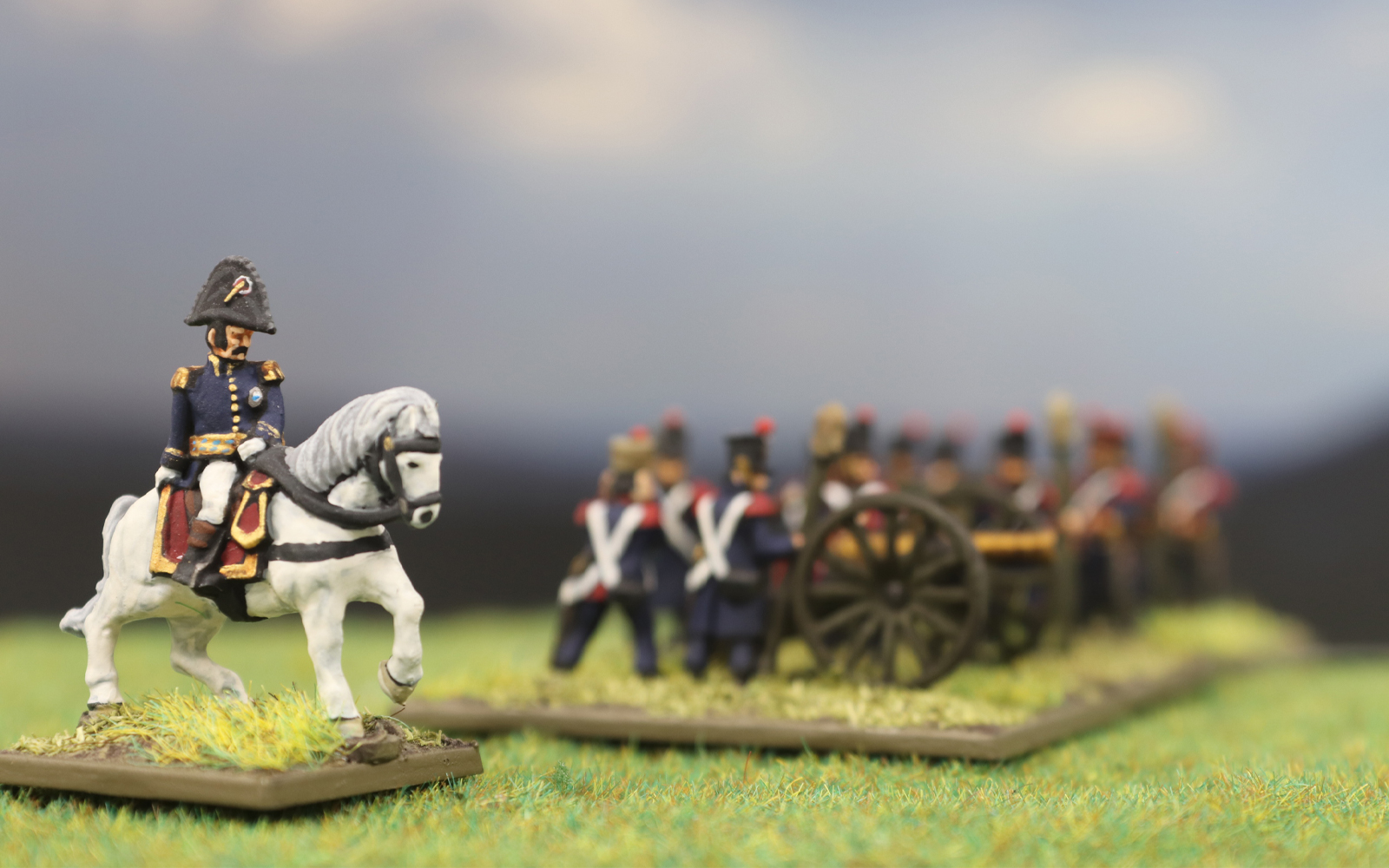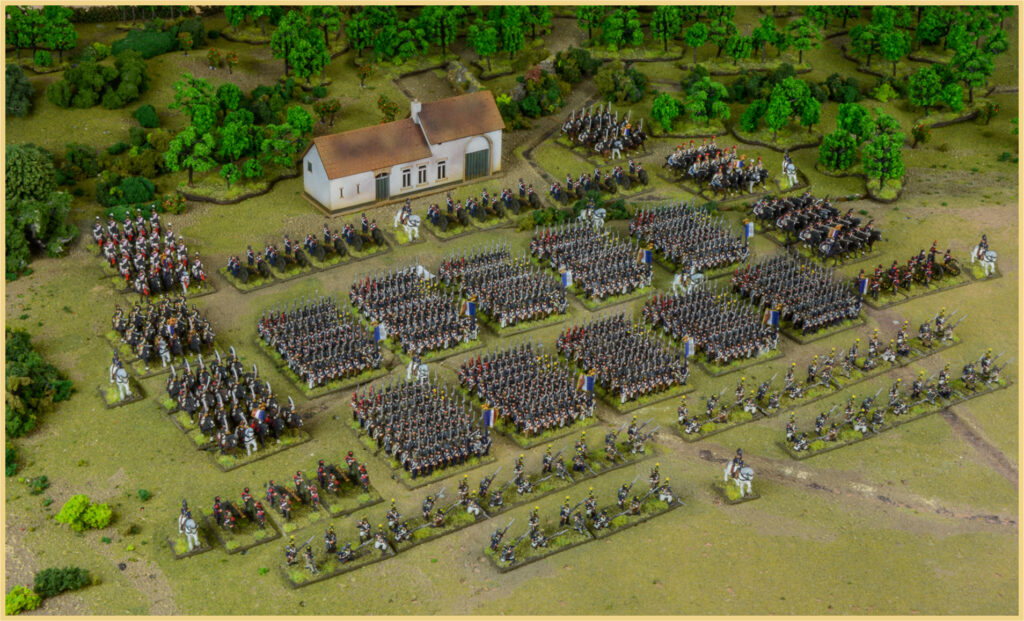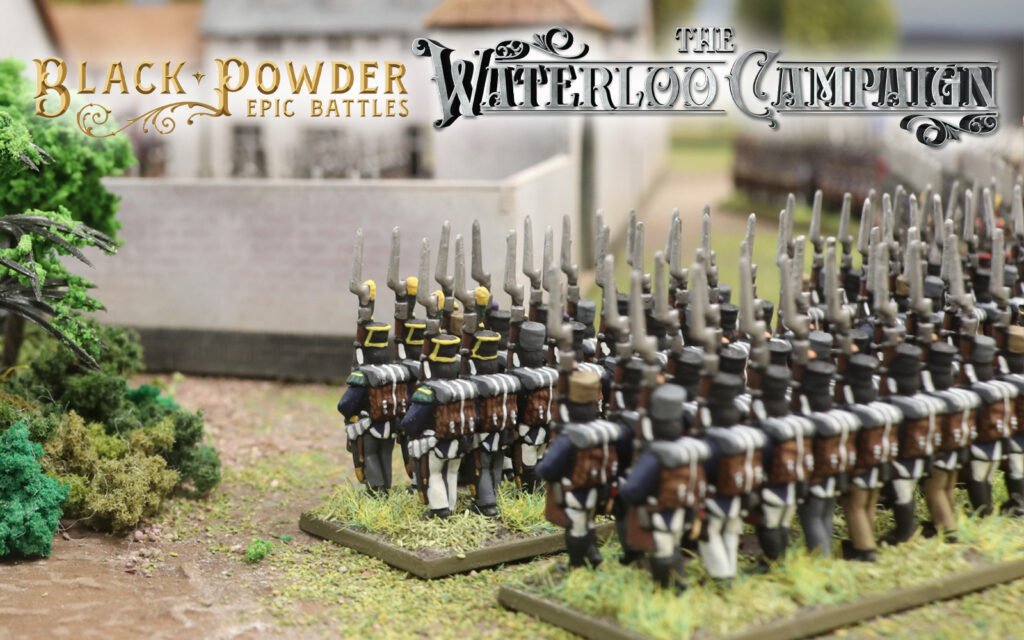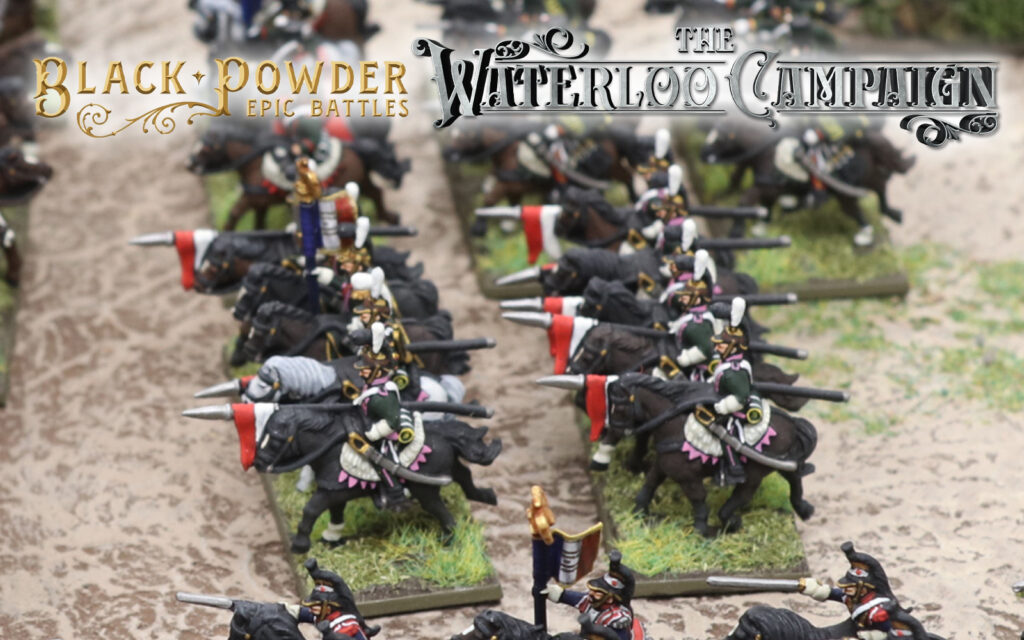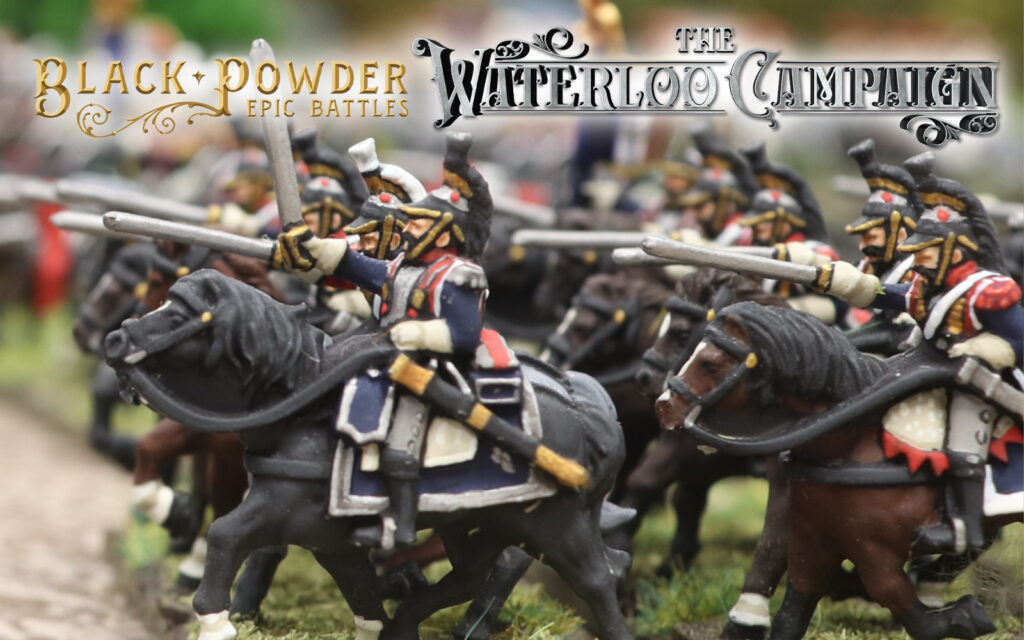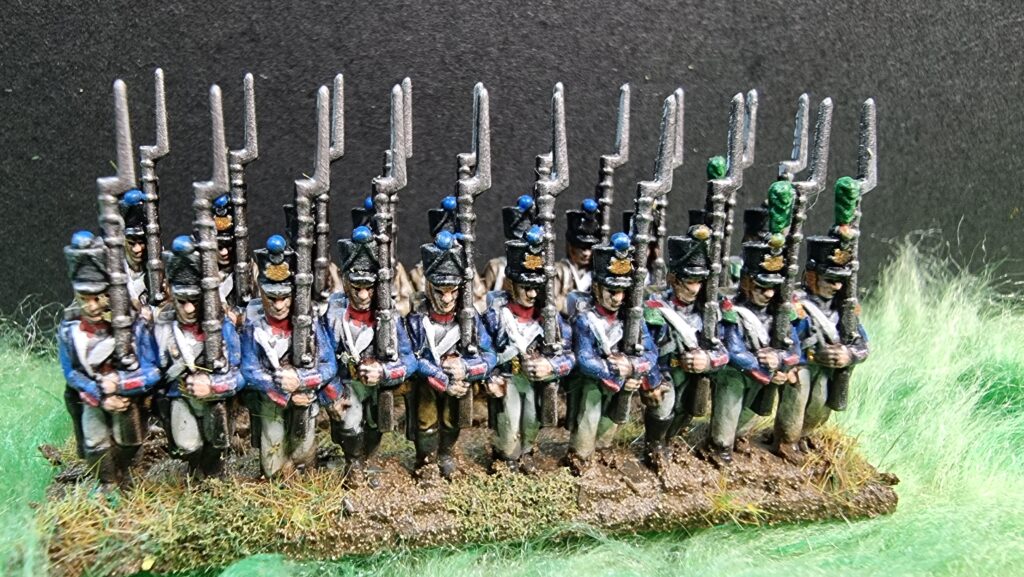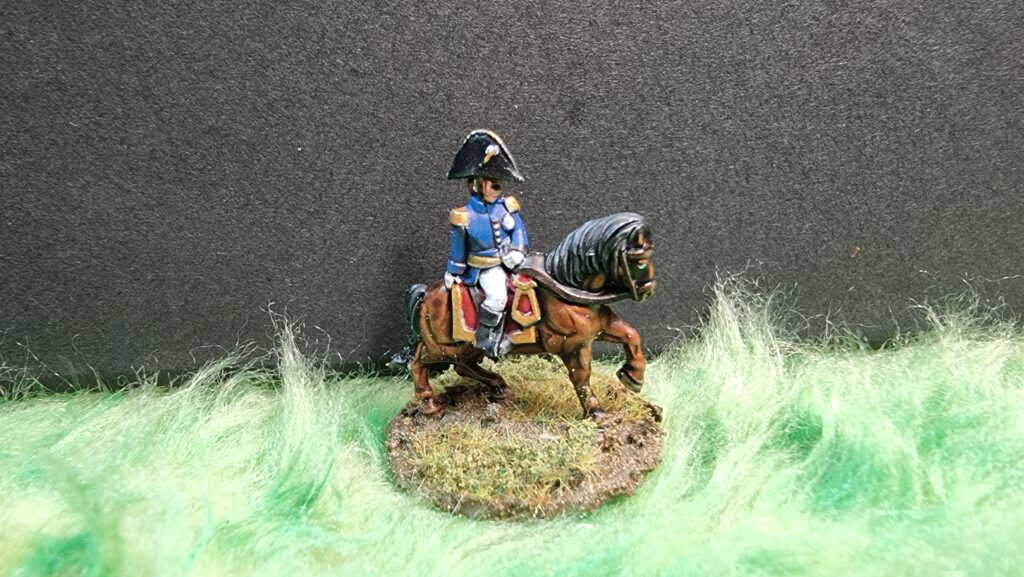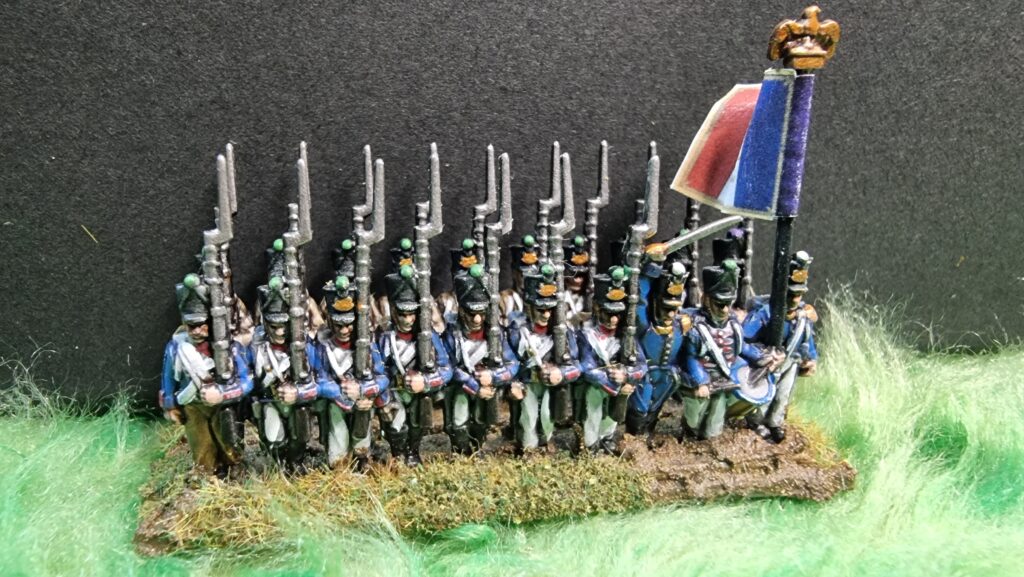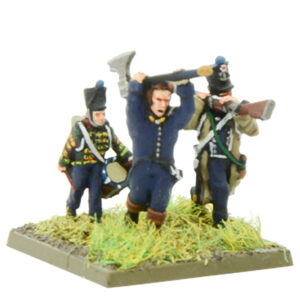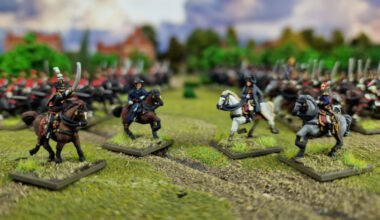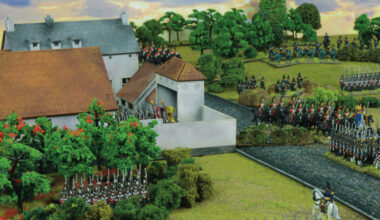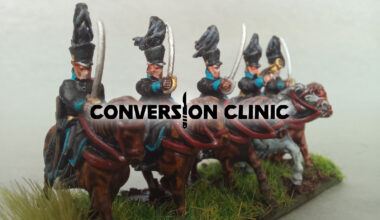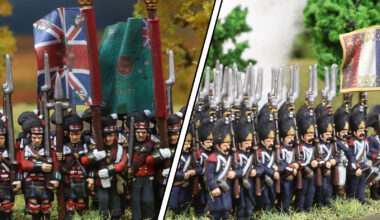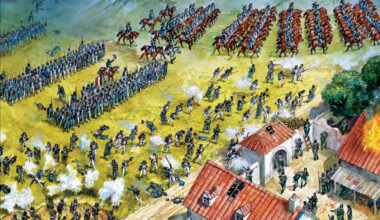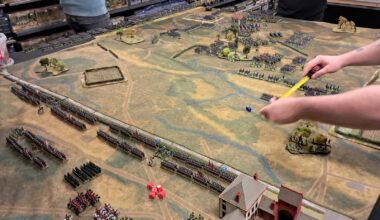The decline in the raw material of the French army, the common infantryman, meant that they were now increasingly less skilled in battlefield drill. The reliance on fast-moving assault columns, driven on by the pas de charge, became more emphasised. Attacking in column would force results quickly on the field, especially if supported by a massive artillery bombardment. In all his campaigns Napoleon had searched for the decisive battle that would win the war at a single stroke. The Waterloo Campaign would certainly emphasise this by the manoeuvres to isolate the allied armies. The divisional columns of D’Erlon’s I Corps, attacking on the field of Waterloo, and the Grande Batterie’s barrage, were all a product of what had gone before.
Epic Battles: Waterloo – Napoleon’s French Starter Army
As with our equivalent British Starter Army, the French box is fully stocked with miniatures as well as a bespoke rulebook and a MDF scenery piece unique to this set (in this case – Dacoster House). In total there are 1074 model soldiers (and 16 guns) within. We’ve broken down the contents of the army below:
Note that Infantry Bases comprise 20 men each, Cavalry Bases comprise 5 models each, and skirmishing infantry use 6 men.
- 800 Line Infantry (40 Bases Worth)
- 80 Skirmishing Voltiguers (13 Bases Worth 2 models spare)
- 21 Lancers (4 Bases Worth – 1 Model spare)
- 18 Hussars (3 Bases Worth – 3 Models spare)
- 21 Chausseurs a Cheval (4 Bases Worth – 1 Model spare)
- 18 Carabiniers (3 Bases Worth – 3 Models spare)
- 24 Cuirassiers (4 Bases Worth – 4 Models spare)
- 18 Dragoons (3 Bases Worth – 3 Models spare)
- 10 Foot Artillery Guns (with 4 Crew each)
- 6 Horse Artillery Guns (with 4 Crew each)
- 10 Mounted Commanders (Based Individually)
Line Infantry & Voltiguers
Line infantry were the most numerous type in the French army. The line infantry regiments were, as Napoleon stated, ‘the sinew of the army.’ They were armed like all French infantry, with the Charleville musket year IX model. A regimental number, for example 45ème de ligne (45th Regiment of the Line), identified each line regiment.
The quality of the line infantry was variable, ranging from veteran status to that of the raw recruit in newly raised units. Although the soldiers of the Armée du Nord were no Grande Armée, they were aggressive in the attack and dogged in defence, and their high manoeuvrability was still to be feared.
By 1815, French Fusiliers, Voltigeurs and Grenadiers wore a black shako that had a brass eagle to its front. The shako also had chin scales in brass and a woollen pom-pom at its front that was coloured according to the company the soldier was in: red for grenadiers, yellow or green for voltigeurs, green for the 1st company, light blue for the 2nd, orange for the 3rd, and violet for the 4th. The Voltigeurs’ and Grenadiers’ shakoes also had a top and bottom band in yellow or red respectively.
Infantry coats, their habit, were dark blue in colour with white lapels and turnbacks piped red. Collar and cuffs were red-piped white whilst shoulder straps were blue, piped red. The post 1812 Habit Vest had a short tail and was square cut at the front. Grenadier companies wore the same coat with red epaulettes and red grenades on the turn backs, whilst voltigeurs had yellow collars and green epaulettes. Whilst on campaign line infantry wore a myriad of trousers – browns, creams and white being the favoured colours. The leather shako would also often be wrapped in a fabric cover, which could be any shade of brown, grey or ochre. A black cartridge box held the ammunition for the musket and was held on a white crossbelt that went over the soldier’s left shoulder, the cartridge box resting on the right hip with the bayonet scabbard. Grenadiers and voltigeurs also wore a short sabre, held on the left hip by a crossbelt that went over the right shoulder. Both belts were whitened with pipe clay.
Light Cavalry – Lancers, Chasseurs a Cheval & Hussars
Hussars and Line Chasseurs à Cheval made up the French light cavalry regiments of the hundred days campaign, both types being the equivalent of British Light Dragoons and Hussars. As in the British army, there was a big difference between the fancy uniforms of the Hussars and the plainness of the Line Chasseurs or Light Dragoons, however the two operated and fought in the same manner. They were responsible for screening the army, scouting the enemy and, once the French army had defeated them, they were responsible for pursuing the enemy relentlessly. There were twelve regiments of lights available to Napoleon, five Hussar regiments and seven Chasseur regiments, although only one Hussar regiment – the 7th – fought at Waterloo.
French Lancers, or Chevaux Legers Lanciers, provided Napoleon with six regiments of light cavalry that could punch as hard as their heavier brothers. Each Lancer regiment should have four squadrons, but as with the Cuirassiers, some regiments only had two or three. The Lancers were converted from Dragoons in 1811 and their heritage could be seen in their uniforms. They retained the green Dragoon jacket with minor alterations to the lapels and green overall trousers. The brass Grecian helmet lost its horsehair mane and gained a black wool comb known as a chenille. Only the front rank of a formation was armed with the lance in the Polish manner. The lance was 8′ 10” in length and had a black wooden shaft with a steel point and a swallow tail pennon of red over white, again in the polish style. There were two of these fine regiments at Waterloo.
Heavy Cavalry
Carabiniers
The 1st and 2nd Carabiniers à Cheval had seniority over all other cavalry of the line. They considered themselves as guardsmen and received the rate of pay of the Guard. At Waterloo, they formed a brigade in the 12th Cavalry division under D’Hurbal. They wore a copper Grecian style helmet with a scarlet comb at its crest, a brass covered cuirass, white coat and, whilst on campaign, grey overall trousers. They must have been a stunning sight to behold.
Cuirassiers
French Cuirassiers were the archetypal ‘big men on big horses’, Napoleon’s elite shock cavalry, second only to his Guard. At Waterloo, the French had twelve regiments of these brave cavalrymen. Passage to the Gross Freres as they were known was not easy; only after twelve years of service and three campaigns was an individual considered for such an elite roll. The regiments should have had four squadrons but two – and three – squadron regiments were seen at Waterloo. The largest regiment in action was the 5th, with 518 men in four squadrons, whilst the smallest was the 7th with 180 men in two squadrons. Regiments were armed and uniformed identically; it was only the colour of collar and cuffs allowing the viewer to distinguish the different regiments.
Dragoons
Although only two regiments of Dragoons took to the field at Waterloo, the Armée du Nord actually had ten regiments. On the battlefield Dragoon regiments were brigaded together, usually two regiments per brigade and were used in the shock heavy cavalry roll. The two Dragoon regiments that fought at Waterloo had a wealth of experience. The 2nd Dragoons, had fought in the Peninsular Campaign for five years, whilst the 7th Dragoons could claim Wagram and Borodino as battles they had been engaged in.
Dragoons wore a Grecian-style helmet with a black horse hair mane. They wore long-tailed green coats over a white waistcoat. The coat had regimental facings on collar, cuffs and turn backs, and these colours ranged from red through crimson, pink, yellow and orange. They wore white cavalry breeches and tall cavalry boots.
Painting The Troops
The task of painting at this scale needn’t be daunting. As demonstrated by these excellent example courtesy of the Miniature Wargaming Warriors.
To find out how they achieved these results, they’ve put an extremely handy painting guide up on their YouTube Channel:
Remember that by pre-ordering any bundles that contain the Waterloo French Starter Army from the Warlord Webstore, you’ll also receive the limited edition Sous-lieutenant Legros miniature.
